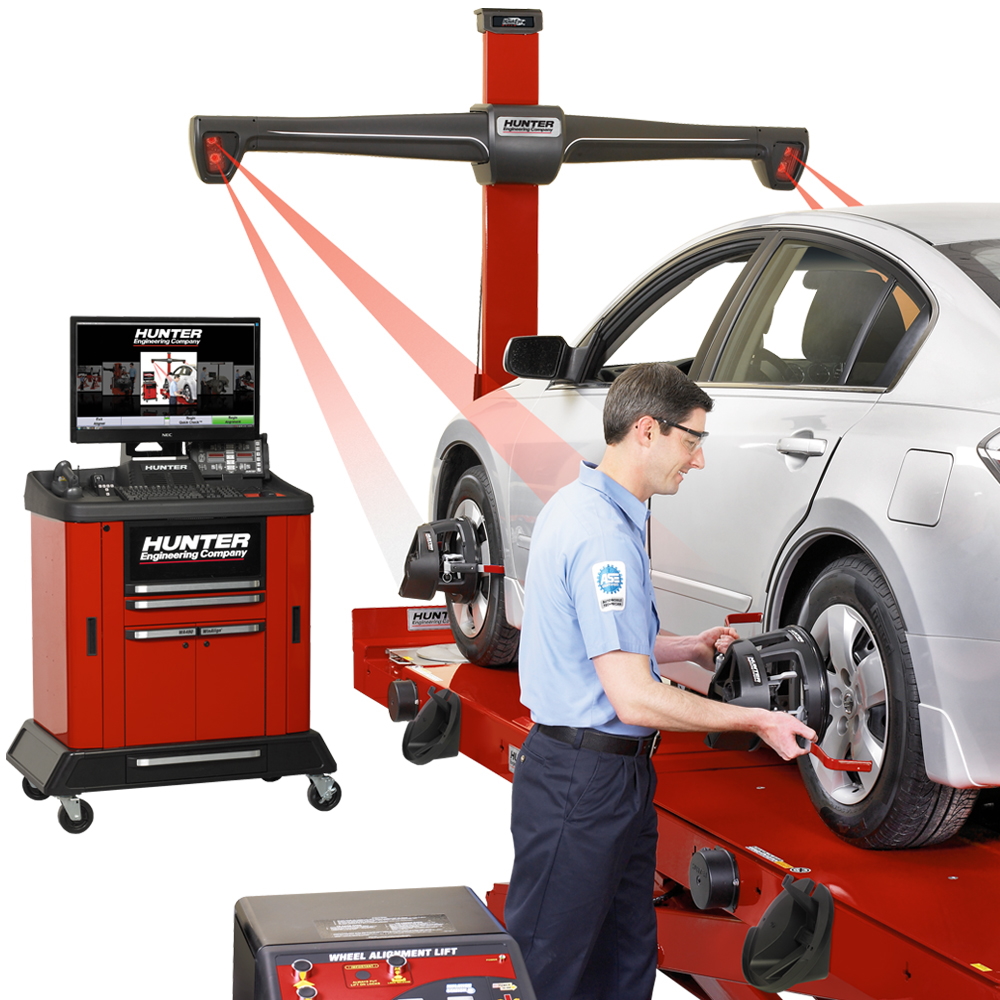Wheel Alignment 
Making sure that your wheel alignment is correct is one of the most important things you can do to properly care for your tires. A poorly aligned car will unevenly wear your tires at an alarming rate. If left uncorrected, you may need to buy new tires much sooner than anticipated! Our certified service team would like to invite you to our shop for a wheel alignment service that could extend the life of your tires.
The actual wheel alignment itself doesn’t just involve the wheels or tires, it includes adjusting the vehicle’s suspension systems. Our team knows how to adjust these sophisticated systems so that your car drives with exceptional precision. Here is a list of a few things which may be signs that you need a wheel alignment:
- Uneven tire wear
- Drifting to one side or another on the road while driving straight
- Vibration in the steering wheel
Even if you don’t notice any of these signs, you may still need a wheel alignment as part of your tire warranty agreement. Come see our local auto repair center for a wheel alignment!
LEARN ABOUT WHEEL ALIGNMENT:
A wheel alignment is the process of adjusting the angles of the wheels to ensure they are parallel to each other and perpendicular to the road. The goal is to improve tire wear, handling, and safety by aligning the suspension components, which hold the wheels in place.
The alignment focuses on three main angles:
1.Toe - This is the fastest tire wearing angle. It is the inward or outward angle of the wheels when viewed from above. Toe-in means the fronts of the tires are closer together than the rear edges, and toe-out means the opposite. Misalignment here can cause feathered tire edges and steering instability.
2. Camber - This is the inward or outward tilt of the wheel when viewed from the front of the vehicle. A slight inward or outward tilt is normal, but if it's too extreme, it can cause uneven tire wear and affect handling. Negative camber (tilt towards the car) can improve cornering but wears the inside of the tire; positive camber (tilt away) is used less frequently and typically for specific vehicles. If camber is not within 0.3° of each other, this can cause a pull.
3. Caster - This is the angle of the steering axis when viewed from the side. Positive caster (tilted back) improves straight-line stability and cornering, while negative caster (tilted forward) can make steering lighter but less stable at higher speeds. The difference in this angle form left to right side is most responsible for the vehicle pulling or driving straight. Most cars are set up with approximately 0.5° higher on the right side to counter act the crown in the road (for rain travel).
During the alignment procedure, the technician uses specialized equipment to measure these angles and make precise adjustments to the suspension. They may adjust tie rods, control arms, or other components depending on the specific misalignment. Once completed, a proper alignment maximizes tire life, improves fuel efficiency, and enhances the vehicle's handling and safety.